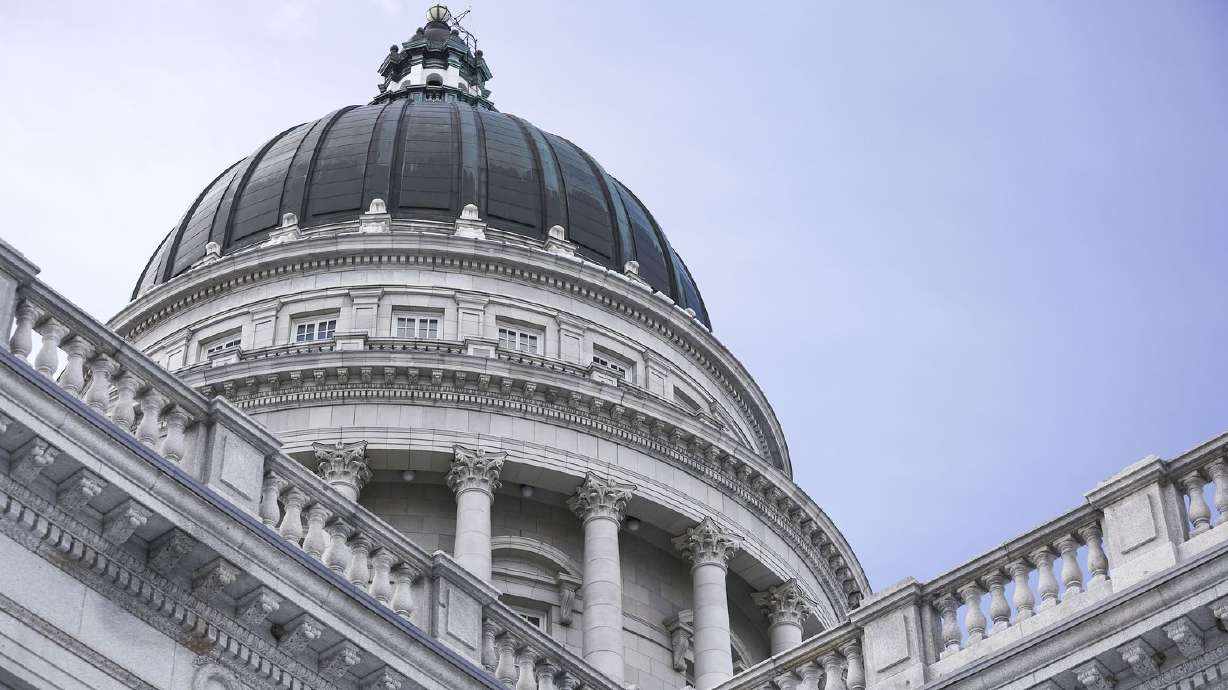Estimated read time: 4-5 minutes
This archived news story is available only for your personal, non-commercial use. Information in the story may be outdated or superseded by additional information. Reading or replaying the story in its archived form does not constitute a republication of the story.
SALT LAKE CITY — Utah legislative leaders got some good news Wednesday about how hard state revenues have been hit by the economic impacts of COVID-19, with a new estimated budget shortfall of $850 million rather than the nearly $2 billion initially forecast.
The new forecast presented to the Legislature’s Executive Appropriations Committee comes as lawmakers prepare to meet starting Thursday in what will be their fifth special session this year to largely roll the $20 billion budget set to take effect July 1 back to current year spending levels and then reducing that overall by 1.7%.
That means the new budget will be about $19.2 billion, a 5.7% drop from what lawmakers intended to spend. Money for education and social services, however, actually went up, with the biggest reductions in planned construction projects, including a new state office building at the Capitol.
The Legislature’s chief economist, Andrea Wilko, was upbeat about the revised revenues.
“We feel like these are pretty good numbers,” Wilko told the legislative leaders who make up the committee. She said in the budget year ending June 30, revenues are now expected to drop $93 million, not up to $600 million. Next budget year, the decline is estimated at $757 million, not up to $1.3 billion.
What’s apparently making the difference is that Utahns are spending their federal stimulus checks and unemployment benefits, boosting sales and, to some extent, income tax collections, she said, cautioning that those funds potentially dry up next month and could put “some downward pressure” on the revenue estimates.
And an even bigger threat is another wave of the deadly novel coronavirus later this year. Wilko said the estimates assume there won’t be a “double dip” in the economy. “That’s probably the biggest risk in the forecast, that we have another downturn in the fall,” she said.
But House Speaker Brad Wilson, R-Kaysville, said there’s concern this won’t be the last time lawmakers have to reduce the budget passed by the 2020 Legislature.
“There is still fear from a lot of people that we have to do further cuts,” Wilson said.
We feel like these are pretty good numbers.
–Andrea Wilko, Legislature’s chief economist
House Majority Whip Mike Schultz, R-Hooper, however, said he’s hoping the numbers “are wrong the other way,” so that the state ends up collecting more money than expected and lawmakers can come back in a future special session to restore some of the cuts made.
“I know that’s a little bit optimistic and not likely, but you never know,” Schultz said. “Maybe we get a vaccine sooner than anticipated and the economy goes back to normal.”
Senate Budget Chairman Jerry Stevenson, R-Layton, said he’s just not that optimistic.
While his own plant nursery is doing well, other businesses are hurting “and my heart goes out to them,” Stevenson said. “It’s just overwhelming to watch what’s going on out in the economy. I’m very surprised by the numbers.”
He suggested some of the additional revenue is coming from people splurging on big-ticket items, likely on credit.
“There’s a lot of money spent on a lot of things,” Stevenson said. “We’re not going to get that again. You’re not going to buy a new pool table or a new hot tub in three months. You’re just going to make the payments. But the state will receive the sales tax now.”
The list of hundreds of budget cuts approved by the committee spares the $50 million set aside to fund student enrollment increases in public schools, Medicaid growth and new spending for affordable housing, homelessness and mental health programs.
Related:
There is also a 1.8% hike, about $33 million, in the state’s funding mechanism for public education, down from the hefty 6% increase agreed to during the 2020 Legislature to bring the Utah Education Association on board with a proposed amendment to the Utah Constitution to remove the income tax earmark for education.
There’s also no longer any pay raise for state employees, although the budget revisions include funding to cover increased health insurance costs. The more than $800 million in the state’s formal rainy day funds has yet to be tapped, although $100 million could be used if the new estimates for the current budget year fall short.
Democrats tried and failed to add back in some funding, including $60,000 for air quality monitoring on the west side of I-15 where COVID-19 cases have been higher. House Minority Leader Brian King, D-Salt Lake City, complained that Democrats had been left out of what he called a “less than optimal” process used to finalize the list of cuts.
“It is what it is,” King said, blaming the situation on Republicans holding supermajorities in both the House and Senate. “Utahns need to know, though, as long a supermajority status exists, they’re going to see decisions made by the supermajority.”
House Budget Chairman Brad Last, R-Hurricane, said no disrespect was intended and that a lot of Republican lawmakers have also been frustrated.
“We have been trying to get the information out as quickly as we can,” Last said. “We try to be as sensitive as we can to the minority party.”










